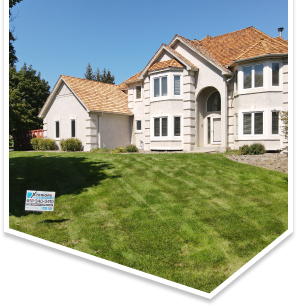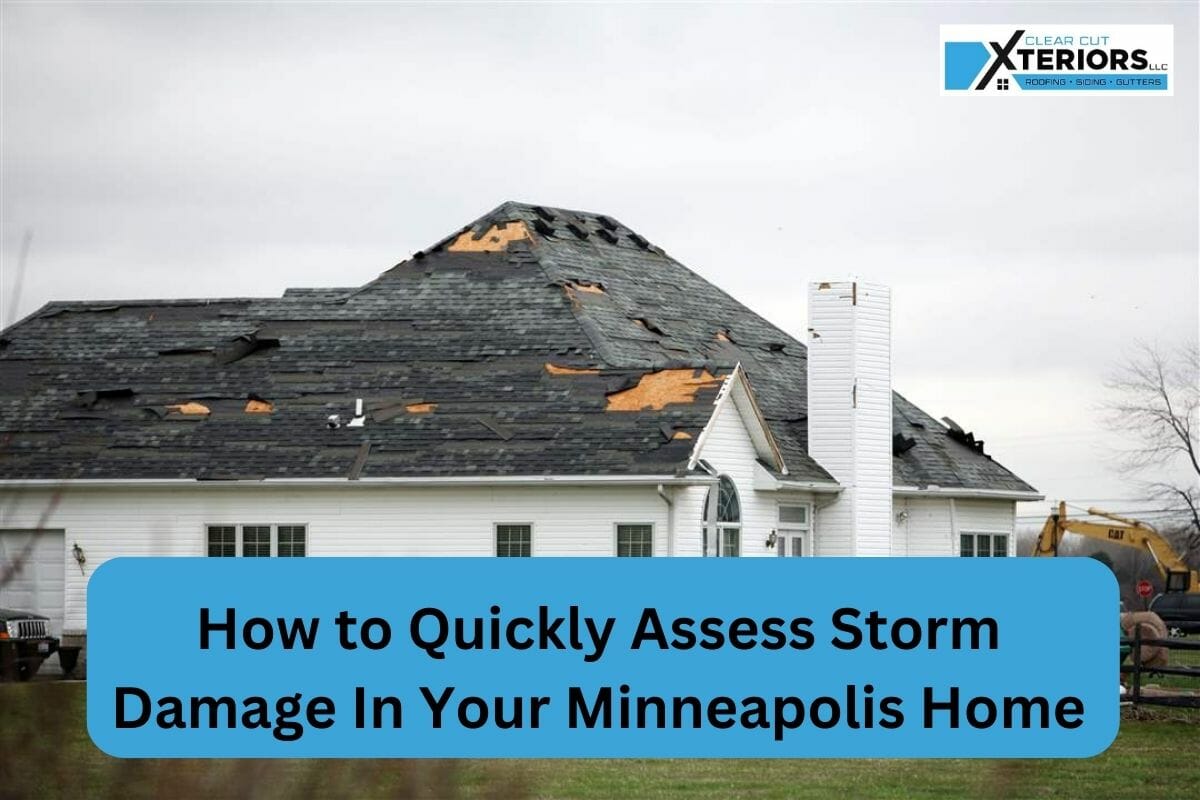Have you recently experienced a storm in Minneapolis and are concerned about your roof’s safety and protection? If yes, we can help. In this article, we will explore the types of roof storm damage in Minneapolis and discuss how you can assess and address them effectively.
Types of Roof Storm Damage
1. Wind Damage To Your Roof
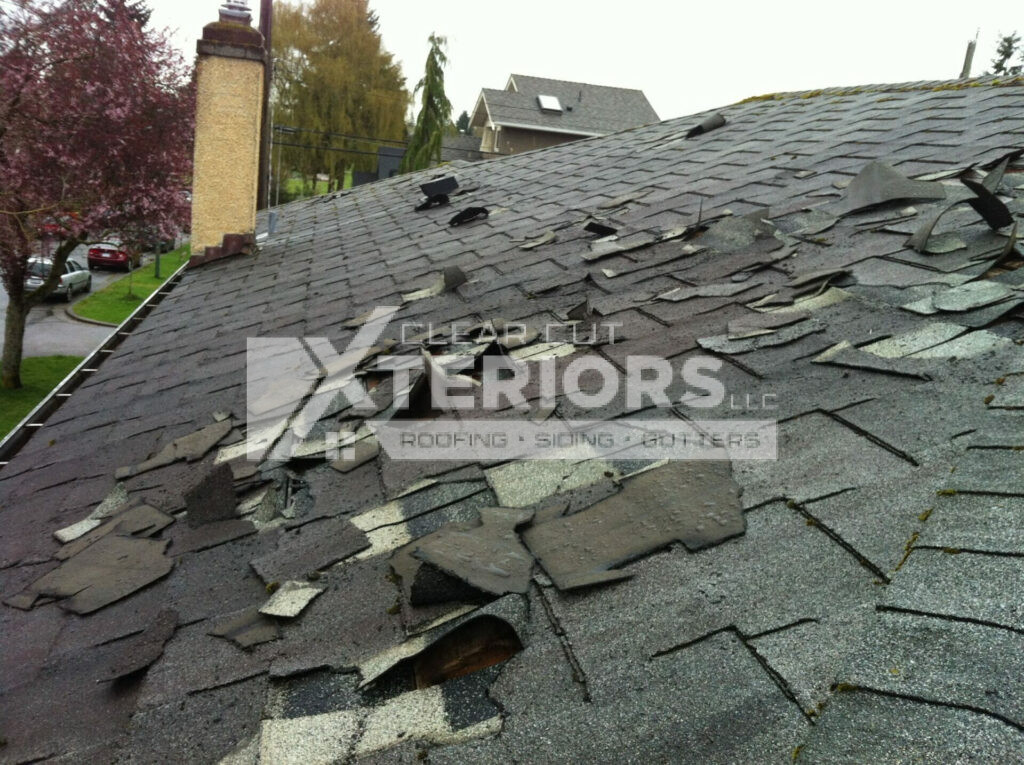
Wind damage is one of the most common types of storm damage to roofs in Minneapolis. Strong winds can do severe harm, including lifting or tearing off shingles, damaging flashing, and even displacing chimney caps. Assessing wind damage is crucial to prevent further issues such as water leaks and structural damage.
Ways To Assess Roof Wind Damage
A. Missing Shingles
One of the telltale signs of wind damage to your roof is missing shingles. If you notice any gaps or areas where shingles are entirely absent, it’s an indication that the wind has lifted and removed them. This leaves your roof vulnerable to water infiltration and further damage.
B. Lifted Or Curled Shingles
In addition to missing shingles, lifted or curled shingles are another common sign of wind damage. Strong gusts can uplift shingles and cause them to lose their protective seal, making them susceptible to leaks and further wind damage. Moreover, curled shingles may also indicate underlying issues such as aging or improper installation.
How To Fix Wind Damage on Your Roof
If you discover wind damage on your roof, it’s essential to address it promptly to prevent more extensive issues. Depending on the severity of the damage, you may need to:
- Replace missing shingles and secure loose ones to ensure the proper protection against water infiltration.
- Inspect and repair damaged flashing to maintain a watertight seal around chimneys, vents, and skylights.
- Consider reinforcing vulnerable areas with additional fasteners or sealants to enhance wind resistance.
2. Hail Damage To Your Roof
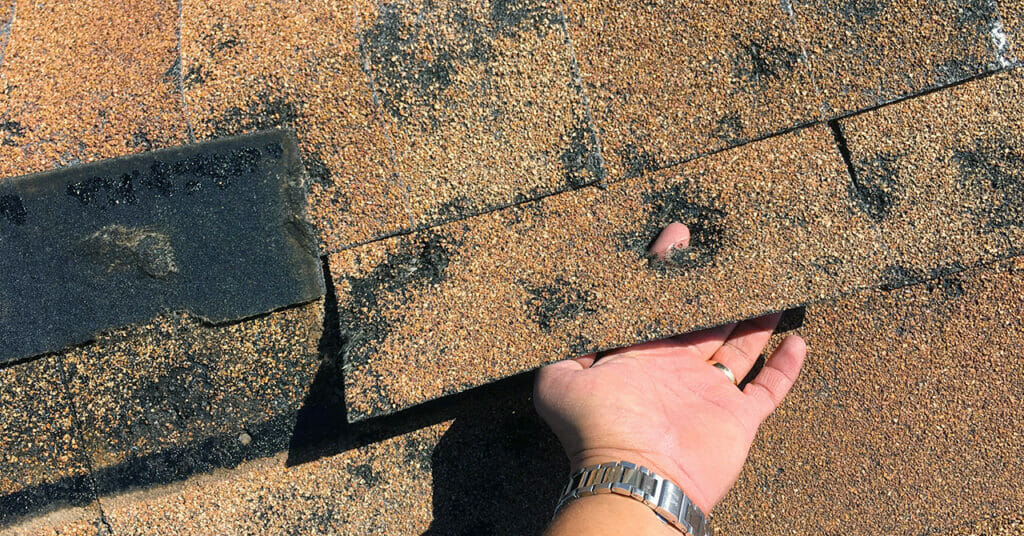
Minneapolis is no stranger to hailstorms, which can cause significant damage to your roof. Hailstones can vary in size and leave dents, cracks, and other forms of damage on your roofing materials. Identifying hail damage is crucial to prevent further deterioration and potential leaks.
For more information, read our extensive guide on how hail storms can damage roofing materials and what to do next.
Ways To Identify Hail Damage
A. Dents And Holes In Roofing Materials
One of the most apparent signs of hail damage is visible dents and holes in your roofing materials. These dents may appear as circular depressions or areas where the shingle granules have been knocked off. Hail can weaken the integrity of the roofing material, making it more susceptible to leaks and further damage.
B. Granule Loss On Shingles
Hail can also cause granules to come off your shingles. If you notice excessive granules in your gutters or scattered around your property, it’s a clear indication of hail damage. Granule loss can compromise the shingle’s ability to protect against UV rays, leading to accelerated deterioration.
C. Dents on Gutters, Vents, And Skylights
Hailstones can also leave visible dents or cracks on gutters, vents, and skylights. These damages indicate the force of the hail impact and should not be overlooked during the assessment. If left unaddressed, these vulnerabilities can lead to water leaks and other issues.
How To Fix Hail Damage on Your Roof
If you suspect hail damage on your roof, it’s crucial to take immediate action to prevent further deterioration. Here are some steps you can take:
- Replace damaged shingles to restore the integrity of your roof and prevent water infiltration.
- Consider installing impact-resistant shingles for enhanced protection against future hailstorms.
- Inspect and repair any damaged gutters, vents, or skylights to ensure proper functionality and prevent leaks.
3. Ponding Water After a Storm
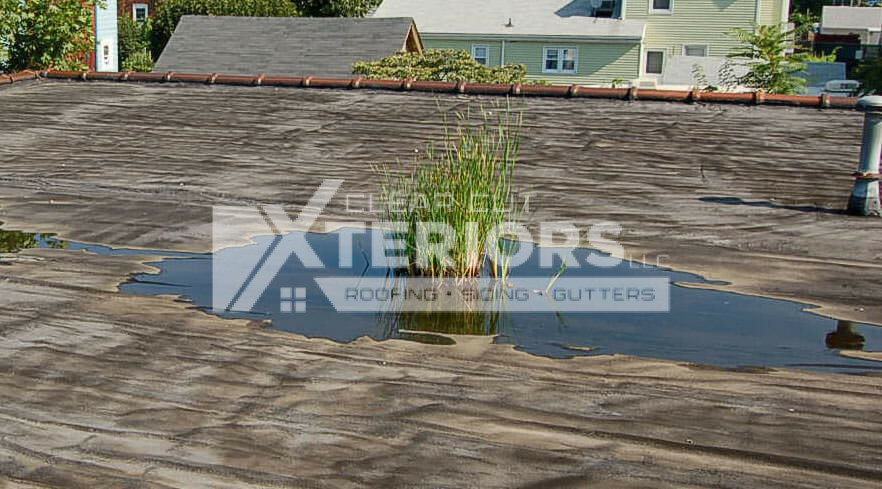
Following severe weather, it is not uncommon to find ponding water on your roof. Ponding water refers to the accumulation of water that does not drain properly, often due to poorly angled roof slopes or clogged drainage systems. This stagnant water can cause various forms of damage that require immediate attention.
Damage Caused by Ponding Water
A. Leaks In The Attic
Ponding water can seep through the roofing materials and find its way into your attic. If left unaddressed, this can result in water stains on the ceiling, damp insulation, and even structural damage. It is crucial to identify the source of the leak and take appropriate measures to prevent further water damage.
Also, read: What To Do If Your Roof Is Leaking During A Storm.
B. Mold, Mildew, And Algae Growth
Stagnant water provides an ideal environment for mold, mildew, and algae to thrive. These organisms can cause health issues and further deteriorate your roof’s condition. If you notice any signs of mold growth or discoloration on your roofing materials, promptly addressing the underlying ponding water issue is essential.
C. Water Stains on Roofing Materials
Prolonged exposure to ponding water can leave visible water stains on your roofing materials. These stains are unsightly and can weaken the materials, leading to premature deterioration and potential leaks.
How To Fix The Damage Caused By Ponding Water
To address the damage caused by ponding water, consider the following steps:
- Improve roof slope and drainage systems to ensure proper water flow and prevent future ponding issues.
- Repair any leaks in the attic and ensure proper insulation to prevent further water intrusion and mold growth.
- Clean and treat affected roofing materials to remove water stains and prevent further deterioration.
4. Debris Or Fallen Branches On Your Roof
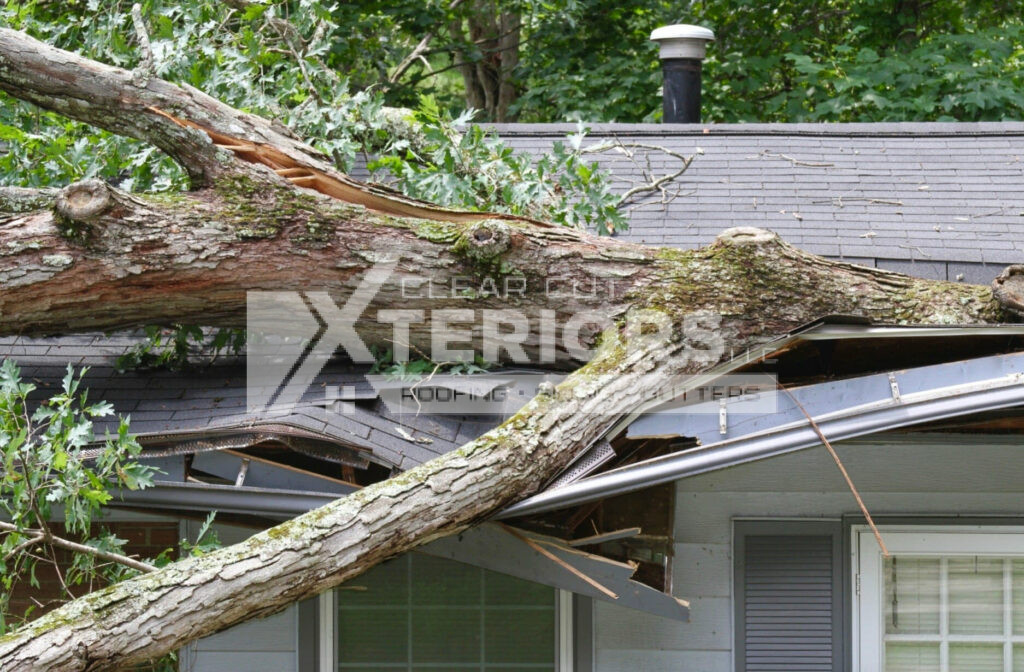
During severe storms, debris, and fallen trees can cause significant damage to your roof. Large branches can puncture or displace roofing materials, leading to leaks, structural damage, and potential safety hazards. Identifying such damage is crucial for prompt repairs and ensuring your roof’s stability.
Ways To Identify Damage Caused By Debris
- Noticeable Destruction Of Roofing Materials
Inspect your roof for visible signs of impacts caused by debris, such as punctures, tears, or displaced shingles, and repair them as soon as possible.
- Fallen Branches
Check for any tree limbs or branches on your roof or in your yard and remove them promptly. Other than direct damage to the roofing materials, an accumulation of debris can hold moisture in place and lead to further issues.
- Leaks Or Increased Condensation In Your Home
Look for water leaks or dampness inside your home, as these can indicate damage caused by fallen debris. Even the smallest punctures in your roof can cause major water damage, including structural issues and mold growth.
How To Fix Damage Caused By Debris
- Promptly remove any debris or tree branches that accumulated on the roof.
- Assess the damage, and work with a professional contractor to determine the extent of the damage and whether repairs or a full replacement is necessary.
- After repairs are complete, consider adding additional weatherproof materials to your roof to prevent future damage.
How To File An Insurance Claim For Your Roof Storm Damage

Follow this step-by-step procedure to file an insurance claim for your roof storm damage.
Understand Your Insurance Policy: Typically, homeowner’s insurance covers damage caused by wind, hail, fire, lightning, falling objects, and the weight of snow or ice.
Document The Roof Damage: After a storm, call a professional to come out and inspect your roof for potential wind or hail damage. They’ll be able to provide you with a report and record of all the storm damage found.
Report The Damage To Your Insurance Company: After documenting the damage on your roof, contact your insurance company to report the findings and initiate the claims process.
Obtain Estimates From Reputable Contractors: Seek estimates from reliable contractors for roof replacement or repairs. Share these estimates with your insurance adjuster to ensure an accurate evaluation of the damage and an appropriate estimate for the claim.
Schedule a Meeting With The Insurance Adjuster: The insurance company will assign your case an adjuster to assess the damage. Arrange a meeting with the adjuster at your property to inspect the roof again and discuss the extent of the damage. Provide them with any relevant documentation or evidence you have gathered.
Hire Professional Roofers To Inspect Your Roof And Fix Roof Storm Damage
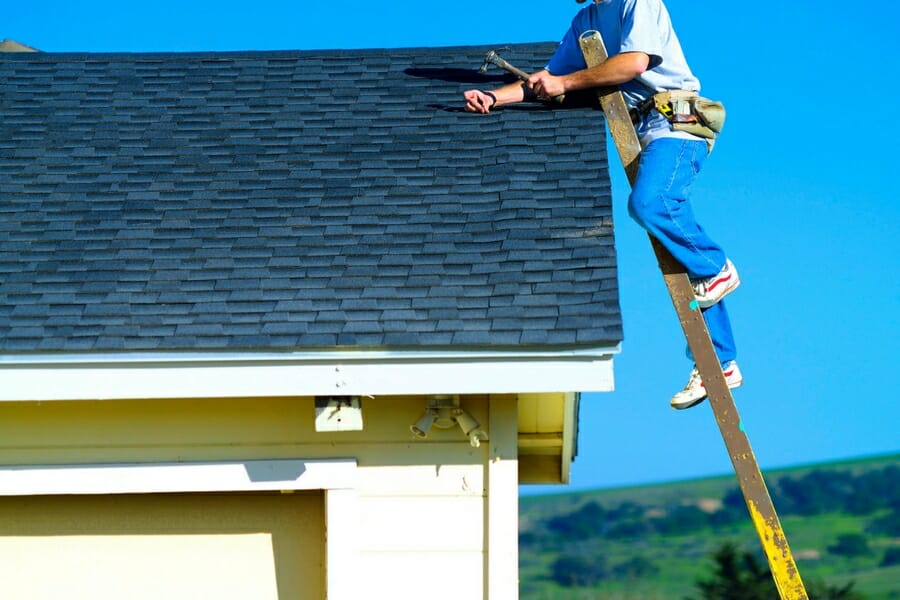
When dealing with storm damage to your roof, hiring a professional roofing contractor is crucial. They should have the expertise, experience, and equipment to assess the damage and safely provide effective repairs. If you live in Minneapolis, Clear Cut Xteriors is the company that can do just that. The team at our company is proficient at dealing with all roofing projects, including roof inspections, repairs, and restorations. Give us a call today at (651) 340-3410, and get your insurance claim process started right away!

